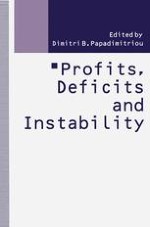1992 | OriginalPaper | Chapter
Pricing, Profits and Corporate Investment
Author : Edward J. Nell
Published in: Profits, Deficits and Instability
Publisher: Palgrave Macmillan UK
Included in: Professional Book Archive
Activate our intelligent search to find suitable subject content or patents.
Select sections of text to find matching patents with Artificial Intelligence. powered by
Select sections of text to find additional relevant content using AI-assisted search. powered by
Economists dissatisfied with the conventional theory of the firm have recently begun to examine the connections between a corporation’s pricing and investment decisions. Prices are seen as linked to potential output, rather than to current output, as in conventional theory. Perfectly competitive firms, according to the latter, take prices as given and choose the optimal output, while in imperfect markets firms take the demand curve as given and choose the optimal combination of price and current output. In both cases productive capacity and the cost structure are taken as given. This may be reasonable for a small family firm, which at the outset makes a once-for-all choice of its optimal size, thereafter adjusting its current activity to changing conditions. But modern industrial corporations do not choose an optimal size; they invest regularly and grow. The conventional picture is not so much wrong as out of place — it is as though someone had painted a scene from the Middle West and tried to pass it off as a portrait of the Rockies. There are similarities, to be sure. The sky is blue and the grass is green, in both cases, and the sky lies above the land. Granted, but prairies are not mountains; it is not even ‘as if’ they were mountains. Corporate firms grow, and their pricing policies must be understood in relation to their growth if we are to accurately picture how the modern economy works.1
